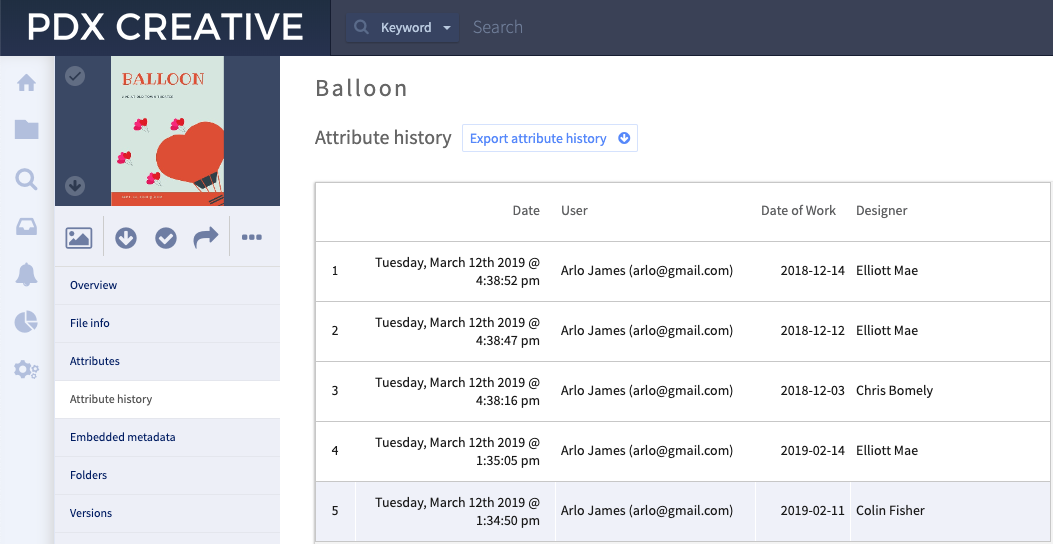Share this
NetX digital asset management software has versatile and customizable attributes, which makes it easy to tag assets your collection. With the Attribute History tool, you can track an asset’s history in a dynamic way.
Getting a historical view of an attribute can come in handy for a variety of organizations. It’s perfect for museums that loan assets out, ad agencies that want to track where and when they’ve used photographs, or fashion brands that need to track whether an item has been loaned out to a designer for inspiration.
 Keeping track of assets
Keeping track of assetsJason Bergeron, Director of Platform Services at archival services company Heritage Werks, primarily uses the historical attributes tool for circulation control.
The company digitizes physical assets for sports teams, fashion brands, celebrities, and Dow 30 and Fortune 500 companies, then house the physical assets in their vaults. They will often get requests to have items put on display, either as part of a museum exhibit or to loan out directly to an organization. By using the Attributes History tool, the Heritage Werks team can see not only where an asset is currently located, but they can also look back through the history of where an asset has been over time.
The tool is robust enough that Jason can use it to track stationary displays, but also to manage traveling displays that tour across the country, often subbing pieces in and out as they go. “We can track an asset from city to city and know exactly where it’s been,” says Jason. “That way we also don’t have to stress about someone losing an asset, and if someone is looking for an asset we know exactly where it is.”
Any attribute within the NetX digital asset management software can have its history tracked with the Attribute History tool. At Heritage Werks, Jason tracks things like the location, which brand or department it has been loaned to, when the recipient received the asset, and when it was checked back in.
Users who have permission to view a specific attribute can quickly access the information in the Attribute History tab within the asset detail view. Every change made to the attribute will be tracked in a table, recording all the history in one easily accessible place.
The information on the attribute history tab can be sorted by date and user, and the filter field allows users to easily filter based on value or date. Metadata can also be exported with a click of a button.
Plus, advanced search capabilities make it easy to search for a particular person who has checked out an item, or to search for attribute history within a specific date range. “To use the UI to do advanced searches has been really helpful,” says Jason. “That’s saved us a lot of time.”
Attribute History can be a powerful tool for tracking an asset’s metadata through time. Jason recommends taking time to think through all the use cases in which you would need to track attribute history to make sure that you have the workload structure set up correctly from the beginning. “The tool itself is very user-friendly,” says Jason. The history of an attribute can start being tracked with a simple click of a button.
As always, the team at NetX will be happy to walk you through any unique circumstances that you might have with your specific use case. We love a challenge, so don’t hesitate to get in touch to learn more about how the historic attribute tool can work for you.
These Related Stories

